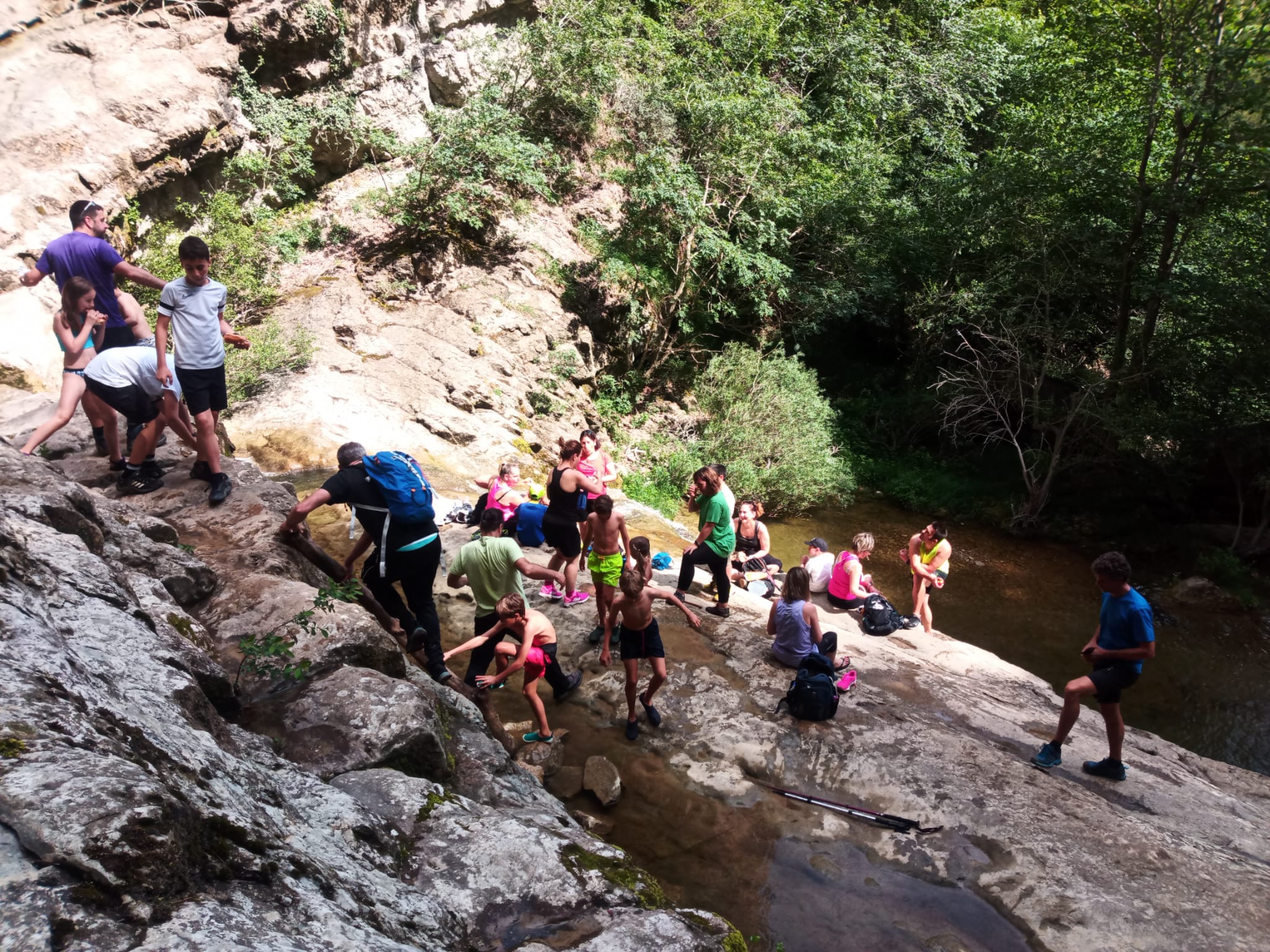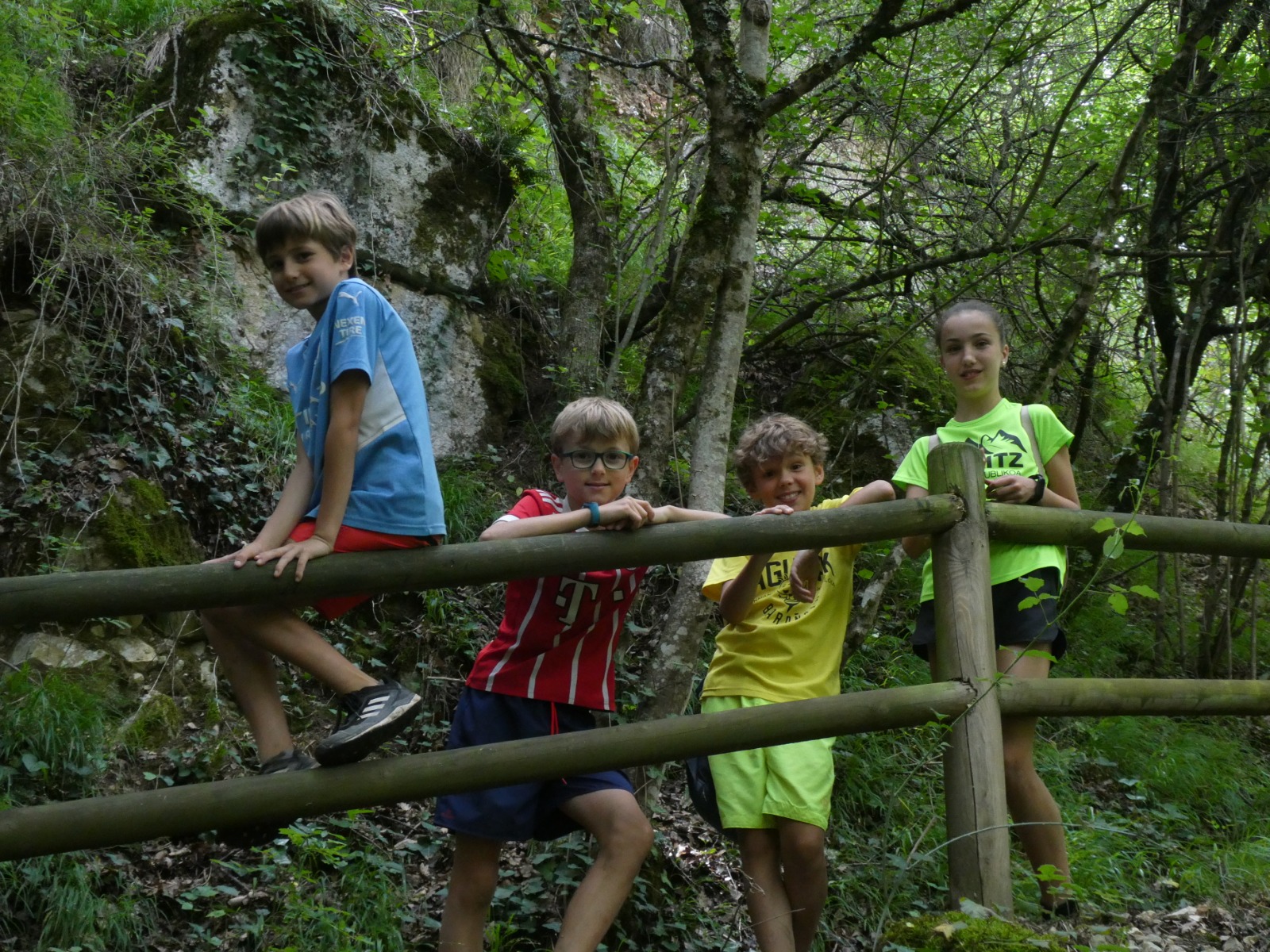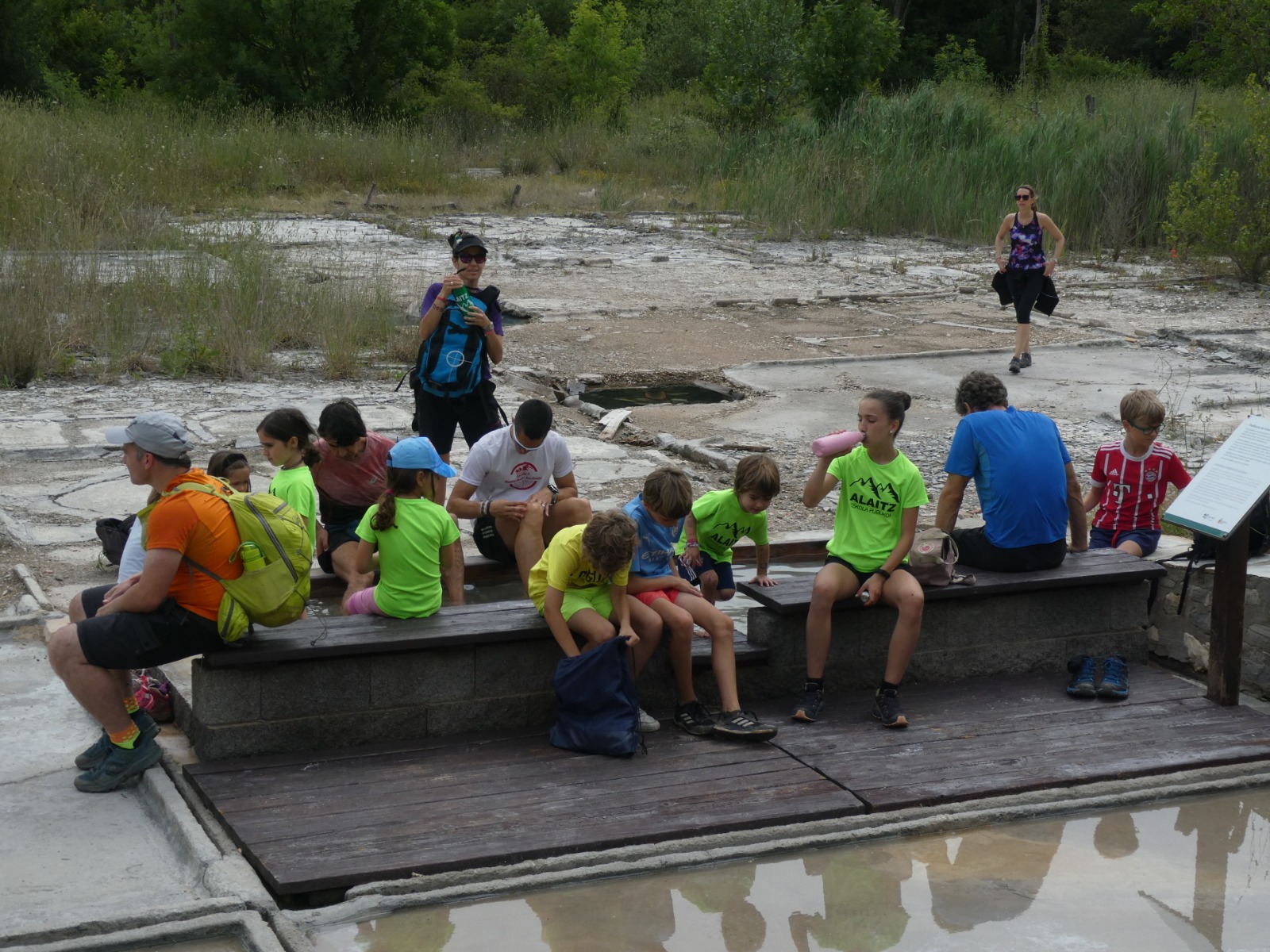EKAINA: Artazul Ulzurrunetik - Alaitz IP - Ikasnova
EKAINA: Artazul Ulzurrunetik - Alaitz IP
JUNE: From Artazul Ulzurrun
29/06/2023
The last exit of the 22/23 season, this year we have had everything (from north to south and from east to west).
On this occasion we met 28 people to move to the town of Ulzurrun at 9 a.m. on the portal of Alaitz, the starting point of today’s tour. We enter a valley where the water consumed by the Region of Pamplona comes from. At the exit point we have different parking spaces and the tour begins in the town square. We start with a slope that leads to the point of confluence of the PR-NA-170. In the direction of the spring of Arteta (marked road with yellow and white marks to turn around the valley of Ollo), on the left there is a “abrevadero” representing a male goat and the road opens to the right following the PR by the top of Ulzurrun. Through tracks and roads we reached “Pontarrón”, an old water pipeline from 1895 and 1920. It currently runs through a parallel bridge built in 1990, when the water pipe is installed, which reaches Egillor.
We still do not waste too much time on the top of the road leading to the Arteta nacedero.
Arteta’s spring is one of the most important drains of Andia’s karstic massif. The spring leaves directly from the boot. Arteta supplies drinking water to Pamplona and its region and was the only supplying source from 1895 until the construction of the Eugi reservoir.
The City of Pamplona acquired the service in 1940. The spring is situated next to a deep gorge where the waters from Goñi are precipitated. We are in a natural environment of high ecological value. Inside this rocky landscape there is a lot of water that, through its spring, brings daily wealth.
Before the spring there is an interpretation center. The Commonwealth of the Region of Pamplona, with this environmental education center, wants to offer us the opportunity to know the mysterious world of groundwater hiding behind the spring. We continue down a deep gorge upstream to the Artazul cascade (about 500 m). This time the road was covered by the waterfalls. It is a simple step, through a chain and an iron stairway, to the waterfall. His vision is impressive.
After the rest, after a lunch and a few baths, we will return through our steps to the Nativity parking, including some slides. On this occasion, we took the road and returned to the marked road (taking a right road at the junction) to descend to the bridge that crosses the Udabe River, passing over an old mill. We left this mill on the right, less than a km from the spring, to follow the path that leads us to the salt flats of Arteta. They are an example of respectful use of natural resources, such as salt. This product was very valuable for centuries because it is used as a food preservative. The salts are shallow lagoons that allow evaporating the water of the saltwater near the spring to obtain the salt that is dissolved and dried. The visit to the saltmen brings us closer to this traditional and community activity.
Currently there is the “pediluvio”, some of which take the “therapeutic bath”. By removing salt water, the skin produces these salt formations because of their high salt content (at a concentration of 250 g/l). After this short break, we continue on the trail until we reach the town of Arteta. At the exit of the village we took the NA-7030 following the PR marks. At about 200 meters, we take the right crossing, which is the end point of the current route, to link with the town of Ulzurrun. This year’s participants had the opportunity to enjoy a joint meal.









